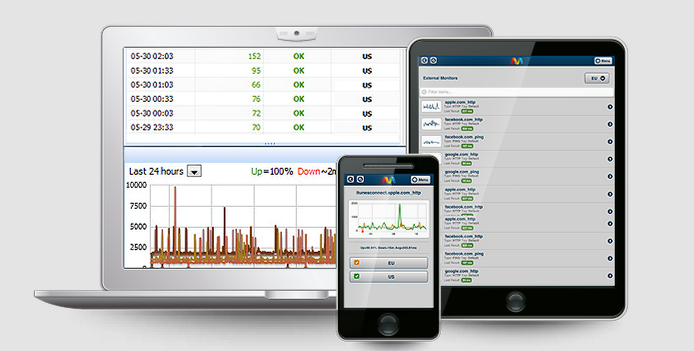Comprehensive Guide to Optimizing Website Performance
By Alex Carter on October 24, 2024
In the digital age, website performance is critical to a business’s success. It not only determines the user experience but also impacts conversions, customer retention, and brand visibility. This guide consolidates key strategies and tips from multiple sources, providing you with actionable steps to improve your website’s performance, increase engagement, and grow your online presence. Let’s explore the most important areas for optimizing both the technical aspects of your site and its broader online performance.
Speed is Everything

Research shows a direct correlation between web load speed and customer engagement. A fast-loading website encourages users to explore further, while a slow site leads to higher bounce rates and fewer conversions. Amazon reported that just a one-second delay could cost the company $1.6 billion annually in lost sales.
To ensure your website performs optimally:
- Reduce Load Time: Compress images, minify CSS and JavaScript, and enable browser caching;
- Optimize for Mobile: Given that mobile devices account for a significant portion of online traffic, it is essential to design with mobile-first principles, ensuring that your site loads quickly and smoothly on smaller screens.
By keeping your website fast, you’ll retain visitors and improve conversion rates.
Assemble a Strong Team and Choose the Right Technology
Website optimization often requires a skilled team. At a minimum, include a full-stack developer to handle back-end performance and a front-end developer to streamline the user interface and reduce unnecessary HTTP requests.
Choosing the right tools is also critical. Consider using cloud-based monitoring software like Paid Monitor, which offers real-time monitoring, deep insights into performance bottlenecks, and alerts for potential issues. This will enable your team to proactively address any performance challenges and ensure that your site stays ahead of user expectations.
Create a Clear and Engaging Central Message
Your website’s message must be crystal clear from the moment visitors arrive. Don’t overwhelm them with too much information or make navigation difficult. Instead, focus on delivering a concise, compelling reason for visitors to stay and interact with your content.
Use simple and large fonts, clearly marked call-to-action buttons, and direct pathways to guide users toward purchasing your product or engaging with your services.
Regularly Engage Visitors to Keep Them Coming Back
Attracting visitors to your site is only half the battle. The real challenge is converting one-time visitors into loyal customers. To do this, provide something of value that encourages them to return, such as:
- Regularly Updated Content: Offer blog posts, articles, and resources that address your audience’s interests;
- User-Generated Content: Include reviews, testimonials, or forums where users can engage with your brand and community.
Providing ongoing value will foster repeat visits and help grow a loyal fan base.
Use Analytics to Measure and Improve Performance

Understanding user behavior is essential for optimizing your website. Tools like Facebook Insights and web analytics platforms can help you monitor visitor activity, track user journeys, and analyze key metrics such as page views, conversion rates, and bounce rates.
By gathering data on how visitors interact with your site, you can identify problem areas and make data-driven decisions to enhance user experience. For example, insights into which devices or browsers users prefer can inform design and performance optimization decisions.
Timing and Frequency of Posts Matter
When running a business online, it’s important to understand that the timing of your content releases can influence user engagement. Posting regularly—three times a day is ideal—ensures your audience remains engaged. Additionally, publishing on weekends and holidays when people are more likely to be browsing leisurely can yield better results.
Leverage Paid Advertising and Partnering with Other Pages
To quickly increase visibility, consider using Facebook Paid Advertising and Promoted Posts. These features allow you to reach a broader audience and drive more traffic to your site. Moreover, partnering with other popular pages to share content can be a cost-effective strategy to gain new followers.
Design for “Mobile-First” Performance
With mobile commerce (m-commerce) now dominating a large share of transactions, ensuring that your website performs flawlessly on mobile devices is critical. Start by designing for mobile users first, then gradually enhance the experience for tablets and desktops. This approach minimizes unnecessary load times and improves the user experience across devices.
Optimize Images and Disable Cache When Testing
Images are a major culprit in slowing down websites. Use lossless compression to reduce image sizes while maintaining quality. Additionally, when testing website performance, make sure to disable browser caching to get a realistic picture of how your site loads for first-time visitors.

Adopt Cloud-Based Monitoring for Better Control
Lastly, one of the most effective ways to ensure top-notch web performance is to implement a cloud-based monitoring solution. Services like Paid Monitor offer scalability, cost-effectiveness, and real-time insights into your site’s performance. These services help identify traffic issues before they escalate, allowing your team to address problems swiftly and maintain an optimal user experience.
Conclusion
Improving your website’s performance is about more than just speed—it’s about offering a seamless user experience, gathering insights on visitor behavior, and providing content that keeps people coming back. Whether you’re enhancing technical aspects like load times or using analytics to better understand your audience, the tips outlined above can help you stay competitive in today’s fast-paced digital landscape.
By leveraging the right strategies and tools, you can ensure that your website performs optimally, engages visitors, and drives business success.
Posted in blog, Monitoring
Alex Carter
Alex Carter is a cybersecurity enthusiast and tech writer with a passion for online privacy, website performance, and digital security. With years of experience in web monitoring and threat prevention, Alex simplifies complex topics to help businesses and developers safeguard their online presence. When not exploring the latest in cybersecurity, Alex enjoys testing new tech tools and sharing insights on best practices for a secure web.
